The Lightning Carrier concept has been in the works for years and will effectively see big deck amphibious assault ships turned into light carriers.

www.twz.com
Early this coming April, United States Marine Corps F-35Bs from three squadrons will converge aboard the USS Tripoli(LHA-7) to fully test the ‘Lightning Carrier’ concept. The idea to basically turn big-deck “Gator Navy” amphibious assault ships into light aircraft carriers packed with F-35Bs first emerged five years ago, but it has its roots in AV-8 Harrier operations going back decades.
A whopping 20 F-35Bs will be conducting sustained operations followed by surge operations from the USS Tripoli.
The event will test the ability of the Marines to operate two full F-35B squadrons from one ship at one time and could have major impacts on what the stealthy jets, and the ships they deploy on, can bring to the fight in the future.
The squadrons that will make up the 20-jet contingent include Yuma-based Marine Operational Test and Evaluation Squadron One (VMX-1), Marine Fighter Attack Squadron 211 (VMFA-211), and VMFA-225.
VMX-1 serves as the test squadron for the USMC and has recently been operating from the USS Tripoli doing testing on ‘spot 9’ at the rear end of the ship’s deck in order to make it a second ‘Unaided Night Landing Spot’ for the F-35B. This could prove crucial to the upcoming Lightning Carrier trials.
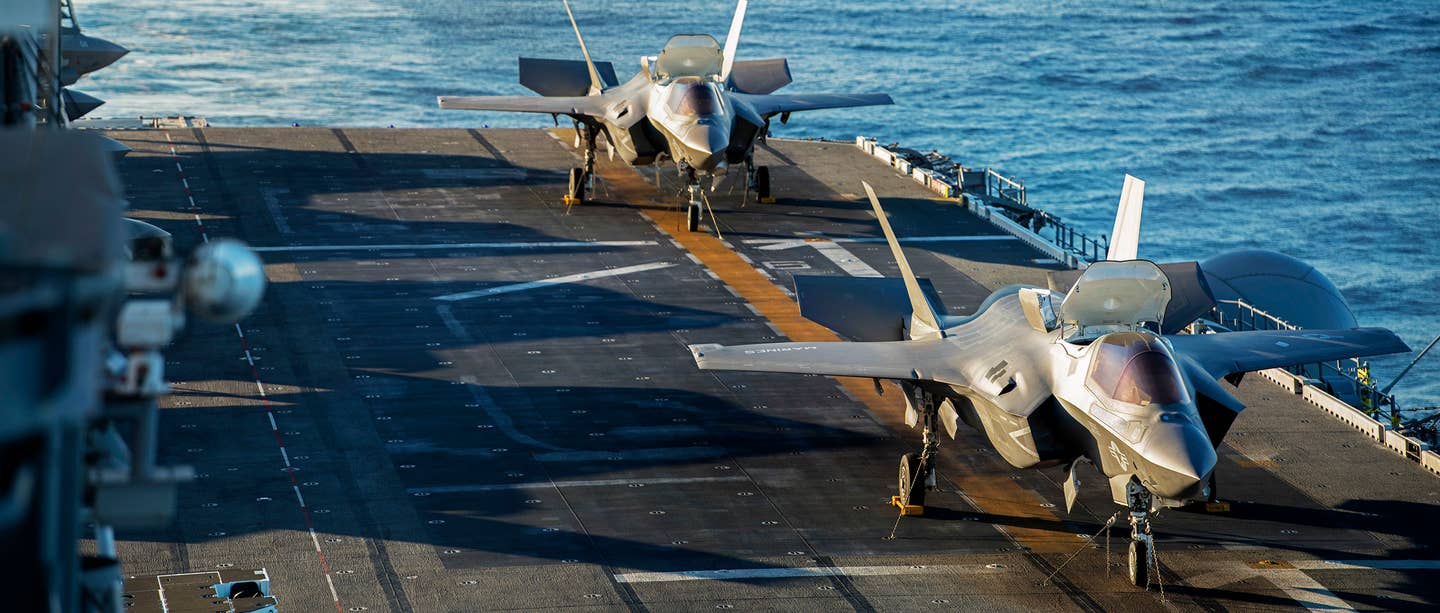
F-35Bs aboard USS America. , USMC
VMFA-211 has just recently returned from a historic maiden seven-month deployment onboard HMS Queen Elizabeth where they brought 10 of their jets to fly alongside the “Dambusters” of the Royal Air Force 617 Squadron.
Meanwhile, VMFA-225 is the latest squadron to transition to the F-35B from the F/A-18D Hornet, becoming the fifth operational USMC F-35B Squadron.
Both VMFA-211 and VMFA-225 have also been executing high-end training as part of the massive Winter Fury ‘22 exercise, which you can read all about here.
In October 2019, more than a dozen F-35B Lightning II aircraft with VMFA-122 landed on the amphibious assault ship USS America (LHA-6) in the Pacific ocean.
A photo published the same month that showed the packed flight deck of USS America with 13 F-35Bs sprawled across it and one MH-60S tucked in forward of the bridge drew a lot of attention. So to see the F-35 number rise by seven airframes will be something to behold.
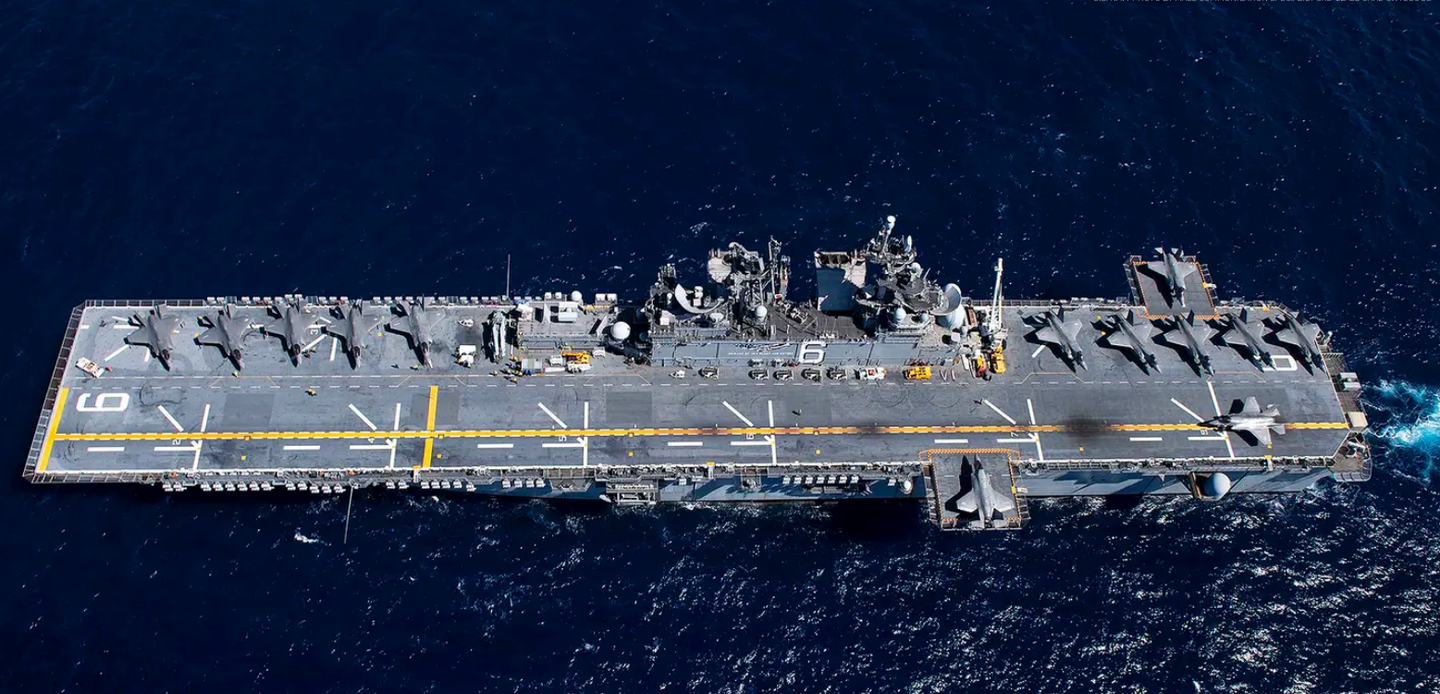
U.S. NAVY PHOTO BY MASS COMMUNICATION SPECIALIST 3RD CLASS CHAD SWYSGOOD
During that deployment, the squadron was testing the ability of the new America class to operate a large number of F-35s from its flight deck which is much smaller when compared to the four acres found on a Nimitz class aircraft carrier.
The relatively new USS America, and now its sister ship, the USS Tripoli, do not feature a floodable well deck like their counterparts. Instead, they were designed with more space to accommodate aircraft like the F-35B and everything that comes with operating them, like fuel, maintenance personnel, spaces and equipment, and munitions.
A few days after that test, then secretary of the Navy, Richard Spencer while speaking at the Brookings Institute said, “We have to mix the game up.
About nine months ago I was looking at the USS America, a terrific amphib ship, and said, you know what, why don’t we load this thing up with F-35 Bravos, put 20 F-35 Bravos on this, and make it quote/unquote a Lightning Carrier.
Well, it ends up the Marine Corps thought about that. We might try it out once and put it in a couple of exercises and know that we have it up our sleeve.” Three years later, that plan is being put into action.
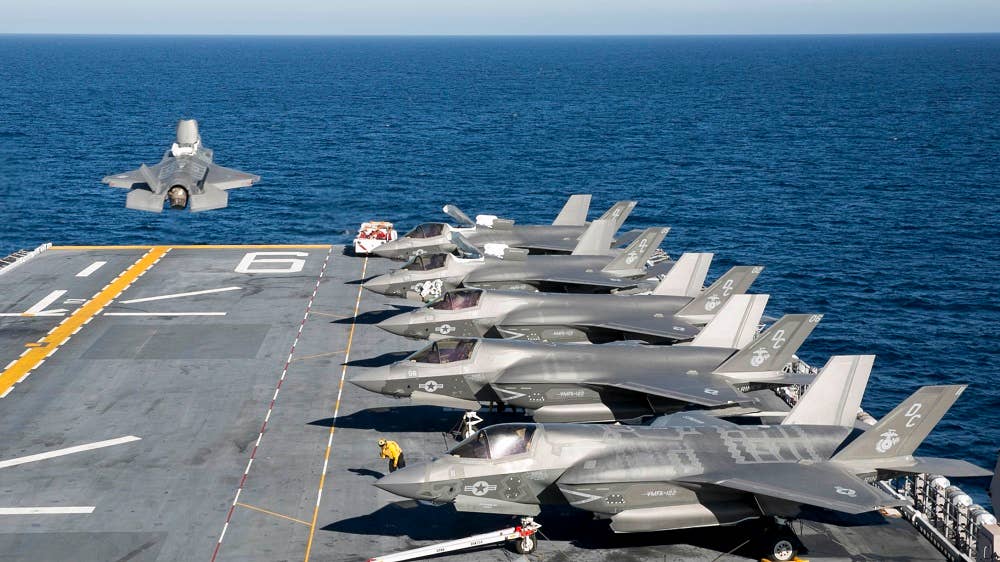
Department Of Navy
The upcoming at-sea period will see the largest number of F-35s ever put to sea eclipsing the 18 operated from HMS Queen Elizabeth. Speaking to The War Zone about the upcoming exercise, Colonel Benjamin “Brutuz” Hutchins who currently serves as the Air Warfare System TACAIR Branch Head at the Pentagon told us “The Lightning Carrier concept is one that has been kicked around for a while and is actually a test point that they are finishing on OT-1 (Operational Test-One) with COTEF (Commander Operational Test and Evaluation Force).”
“This is a CATF-led testing event to determine the feasibility of 20 F-35Bs on board an LHA/LHD type ship. We see this as a demonstration event.
It is going to allow them the ability to gradually replicate the ability to learn the lessons on how to spot, taxi and recover and launch with that many aircraft and learn how to use the hanger from the spotting perspective so we can maximize efficiency and understand the ops tempo of the ship going forward.”
“The concept is not a ‘baseline one.’ We are not trying to substitute a Lightning Carrier for the CVN fleet. Rather, It’s just another tool in the toolbox. This is an option to rapidly project power. When you look across the vast Pacific, one of our challenges will be the ability to quickly pivot and enable our forces to be.”
Hutchins has over 3,000 flight hours with almost a third being combat hours. His current role in AWS-TACAIR is to evolve and meet future threats while sustaining and enhancing Marine Air-Ground Task Force (MAGTF) warfighting capabilities. He flew the AV-8B Harrier in several squadrons before commanding VMA-223 at MCAS Cherry Point, where he provided detachments of aircraft to be part of Marine Expeditionary Units.
Speaking about switching to the F-35B for MEU deployments, he told The War Zone, “The F-35B is much more capable than the aircraft I grew up flying. It’s a multi-domain access aircraft that can do the traditional missions like air space denial, but it can actively see the world around it with the ability to collate the information and pass it back and allow multiple other weapon systems to hold the enemy at bay.”
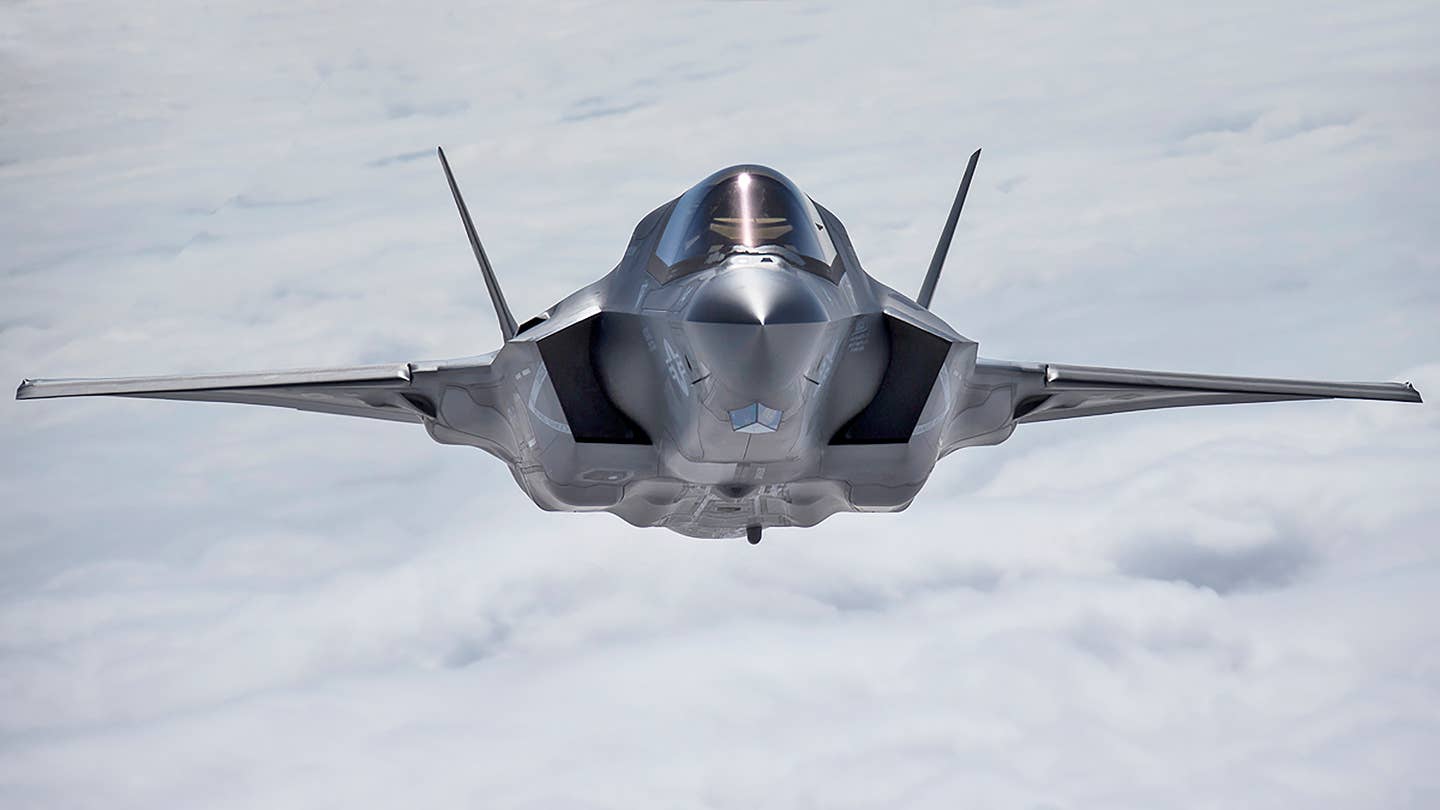
An F-35B., USMC
“With the F-35B, we have the ability to fly from the ship and operate from small airfields and then rapidly displace from a maneuver perspective, and so that is its strength.
We can take the Bravo almost anywhere and if we have logistics and weapons then we can run that airplane until it needs maintenance and we can swap out the pilots as required… We are currently testing the ability to operate the F-35B from narrow roads, getting the width of the roads down in the 30s of feet from the current 70. It’s hard for the enemy to target every road in the Pacific.”
While two of MAG-13’s squadrons are supporting the Lightning Carrier concept, the other F-35B squadron, VMFA-122, is currently in workups with the 13th Marine Expeditionary Unit (MEU) where they are looking at getting 10 F-35Bs on an amphibious assault ship (that has a well deck) with a full MEU complement of other aircraft.
Hutchins said, “VMFA-122s task is getting with the MEU Commander in order to have a full ACE capability of 10 MV-22s and all the other helicopters with 10 F-35Bs. Some of the helicopters will have to go to the LPDs”
Since the 1970s, the Navy’s LPH/LHA/LHD fleet has operated an Aviation Combat Element (ACE) that saw a mix of helicopters and fixed-wing AV-8 Harriers. For the fixed-wing side, the ACE usually sailed with six AV-8Bs, 9 pilots, and about 90 to 100 support personnel.
With the introduction of the 5th generation stealthy F-35B, the capabilities of the ACE have been greatly expanded as the jets have the ability to survive in contested airspace.
The F-35’s high-end sensor suite and electronic warfare capabilities make it less dependent on other support aircraft like the EA-18G Growler and E-2D Hawkeye compared to its older jump jet counterpart.
As a result, some deployments saw just six to eight F-35Bs aboard one of these ships, but under the Lightning Carrier Concept and the upcoming 13th MEU deployment, this will not be the case.
Finding the right balance of F-35Bs and other aviation assets for the Lightning Carrier and future MEUs will be difficult. Expeditionary Strike Groups (ESG) have evolved over the years along with the ACE.
As the bigger MV-22 replaced the CH-46, the AH-1/UH-1 helicopters have seen a move from the LHAs/LHDs over to the smaller hanger-equipped San Antonio class LPDs. Hutchins stated “We start and stop with our infantry brethren. The CH-53 and the V-22 are the utility role players that enable whatever we do in the future.
We have to be able to sustain our forces so we need to figure out what our tilt-rotor and rotary-wing connector missions will be and how we complement that with the F-35 by talking with those aircraft and talk them around a specific threat ring and provide them with protection. That is the balance we have to figure out. Logistics vs. lethality.”
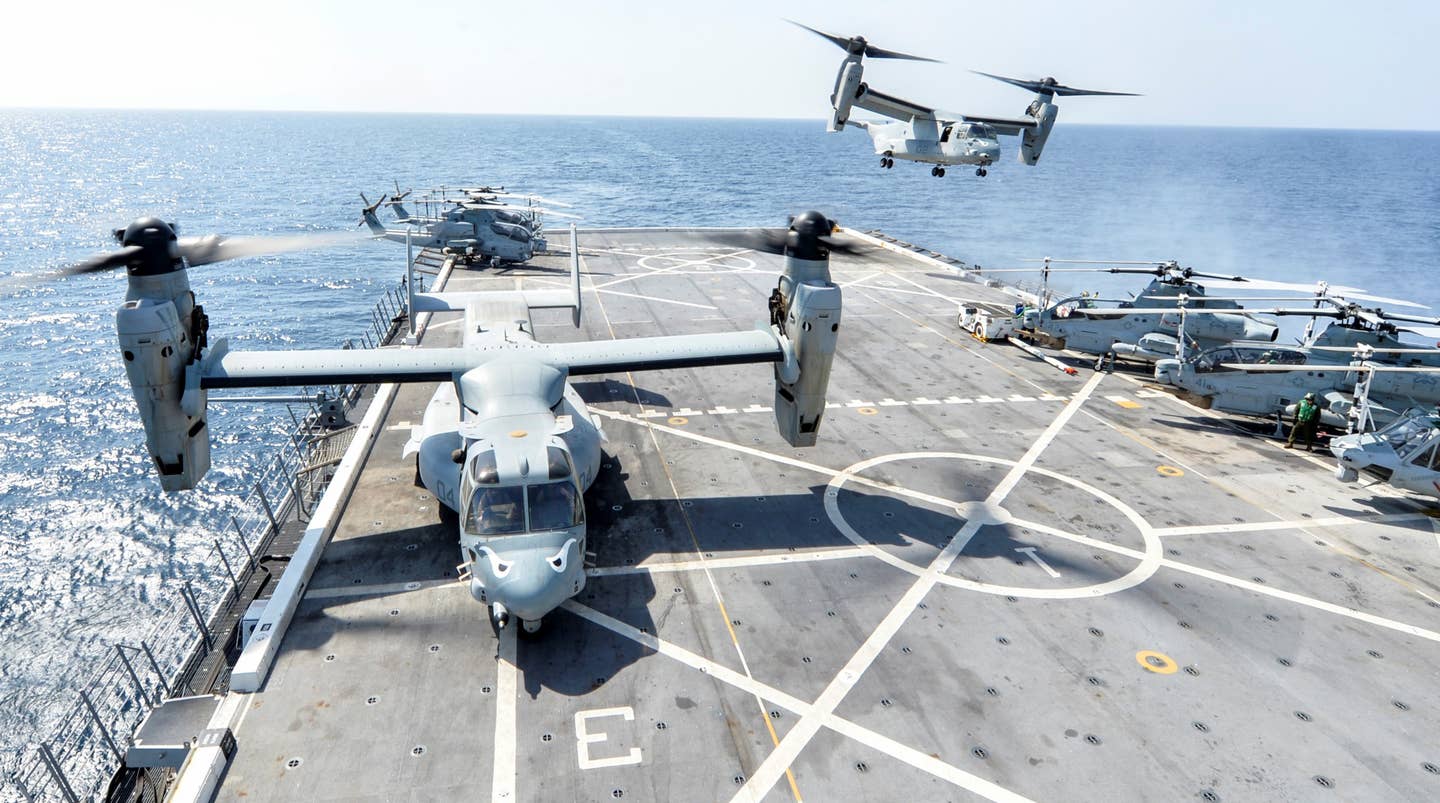
A full contingent of MV-22s, AH-1Z, UH-Ys aboard USS Somerset (LPD-21)., USMC
With this upcoming event, the Marines are taking a large portion of a MAG and putting them to sea. Hutchins added “We need to do reps and sets and work with the deck crews in order to develop a playbook essentially with a lessons learned repository in order to make sure we can replicate this in a rapid manner in the future so the pilots, LSOs (Landing Signal Officers) and Marines can be ready when we need to go down range.”
“Another thing is that the deck sequence with a large number of airplanes has yet to be tested. We currently recover aircraft on spot seven and nine in the rear of the boat but there is potential, just like we learned with the Harrier, that we need to have a forward and aft landing spot in order to recover and push airplanes to their forward and aft parking spots simultaneously. Deck management will be challenging in the beginning so we will build into it and take it slow.”
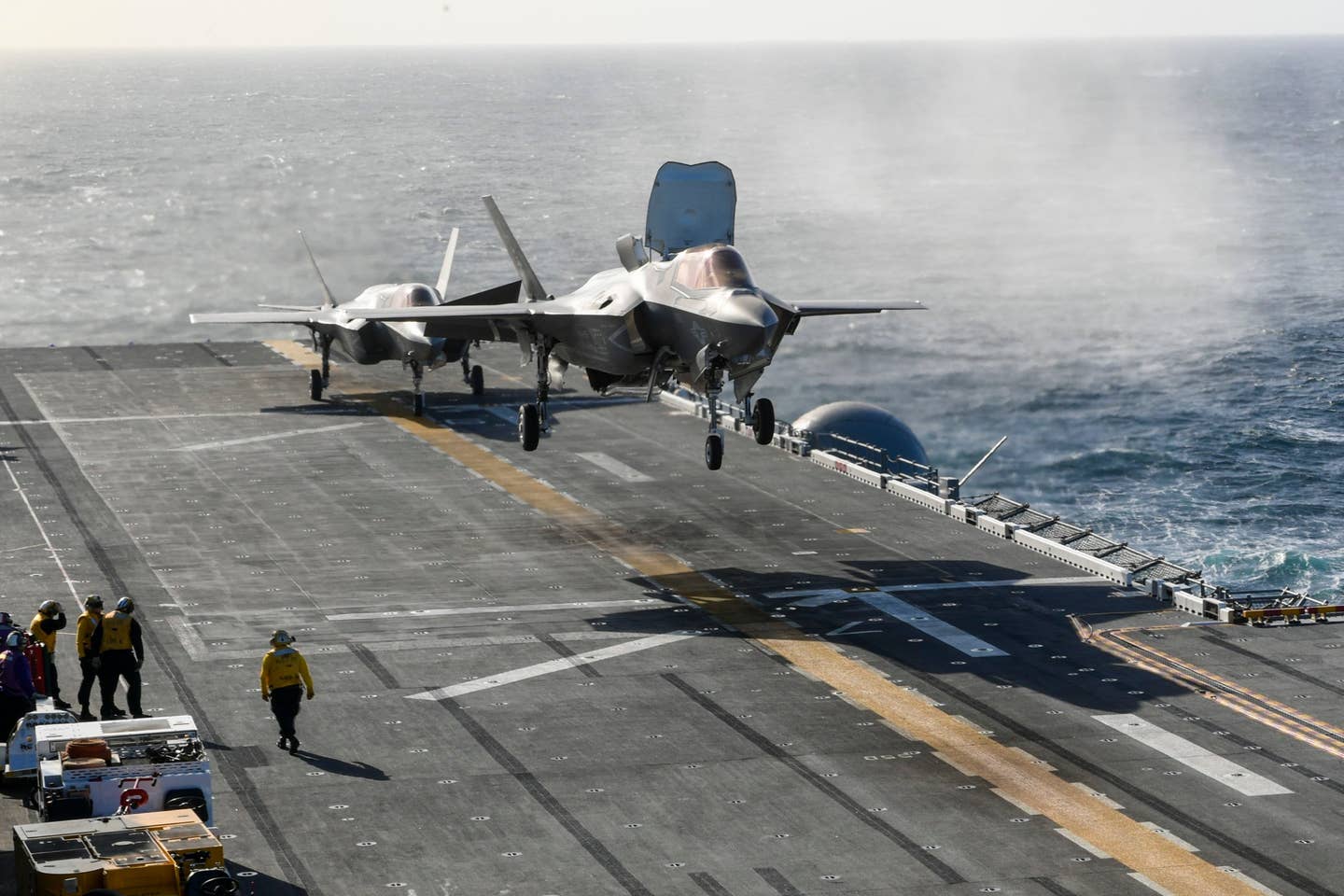
F-35Bs recover aboard an LHA., USN
And these smaller, but critical details are largely what this massive learning experience will bring to light. Just operating this many F-35Bs, with all their fuel, maintenance, weapons, and other requirements, on an LHA, is bound to uncover some surprises. Flight operations is a whole other factor.
As Hutchins eluded to, how do you launch and recover enough F-35s to make the concept viable while dealing with such a packed deck? Simply put, there is a lot to prove and a lot to learn, and that’s what this exercise is all about.
And the concept of a Gator Navy flattop turned into a light carrier isn’t new. In December of 1990, 20 AV-8 Harriers embarked on the USS Nassau (LHA-4) for the start of the first Gulf War a month later.
Over a decade later with the invasion of Iraq imminent, the USS Bataan (LHD-5) and the USS Bonhomme Richard (LHD-6) were designated “Harrier Carriers” and sailed with 24 Harriers.
The USS Bataan alsodelivered a MEU to the Gulf before converting into a Harrier Carrier, delivering over 120 tons of ordnance during the deployment.
Neither ships’ crew ever trained for such a large number of Harriers operating from their decks, so they relied on some lessons learned from the USS Nassau. The actions of both ships proved the amazing fixed-wing capabilities these ships can provide.
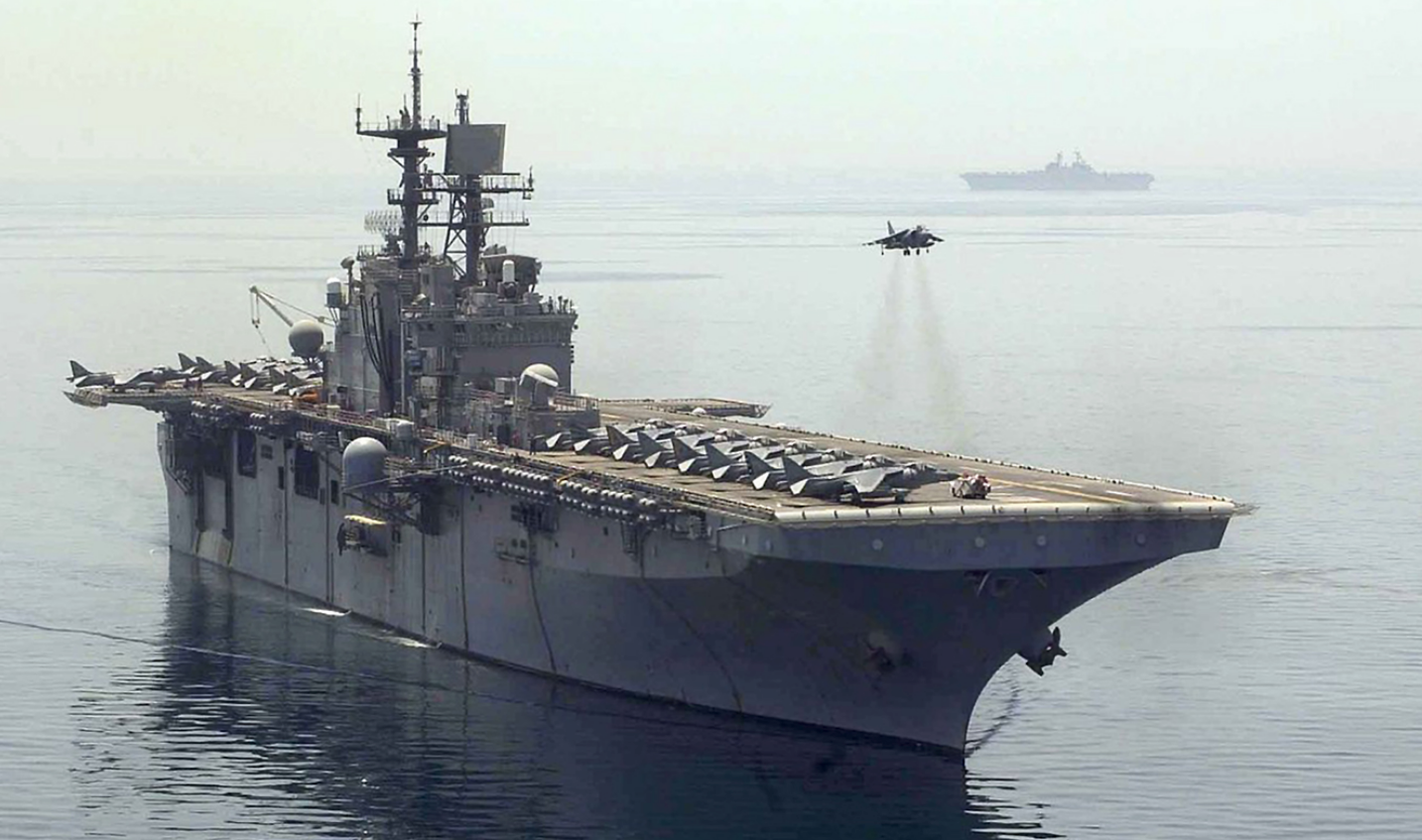
The USS Bataan alsodelivered a Marine expeditionary unit to the Gulf before converting into a Harrier Carrier, delivering over 120 tons of ordnance during the deployment., DoD
The results of this initial Lightning Carrier test outing could also have impacts on the larger naval and marine aviation communities and the ships that support them.
Even though this concept isn’t supposed to compete with supercarriers or their air wings, procuring lighter carriers than the hugely expensive
Gerald R. Ford class has been a hot topic as of late. Finding the right mix of carriers and air asset types is seen as essential to retaining a leading edge in the naval warfighting domain for the foreseeable future.
The USMC is also going through a deep rationalization of its force configuration, one where big deck amphibious assault ships appear to have less of a starring role. The ability to make the Lightning Carrier concept a reality could help prove their ongoing value, despite their high cost.
Speaking at that same Brookings event mentioned earlier in the article, former Navy Secretary Spencer added the following about the Lightning Carrier concept “My cost performance there is tremendous.
Does it have the same punch [as a carrier], no it doesn’t, but it does have a very interesting sting to it.”
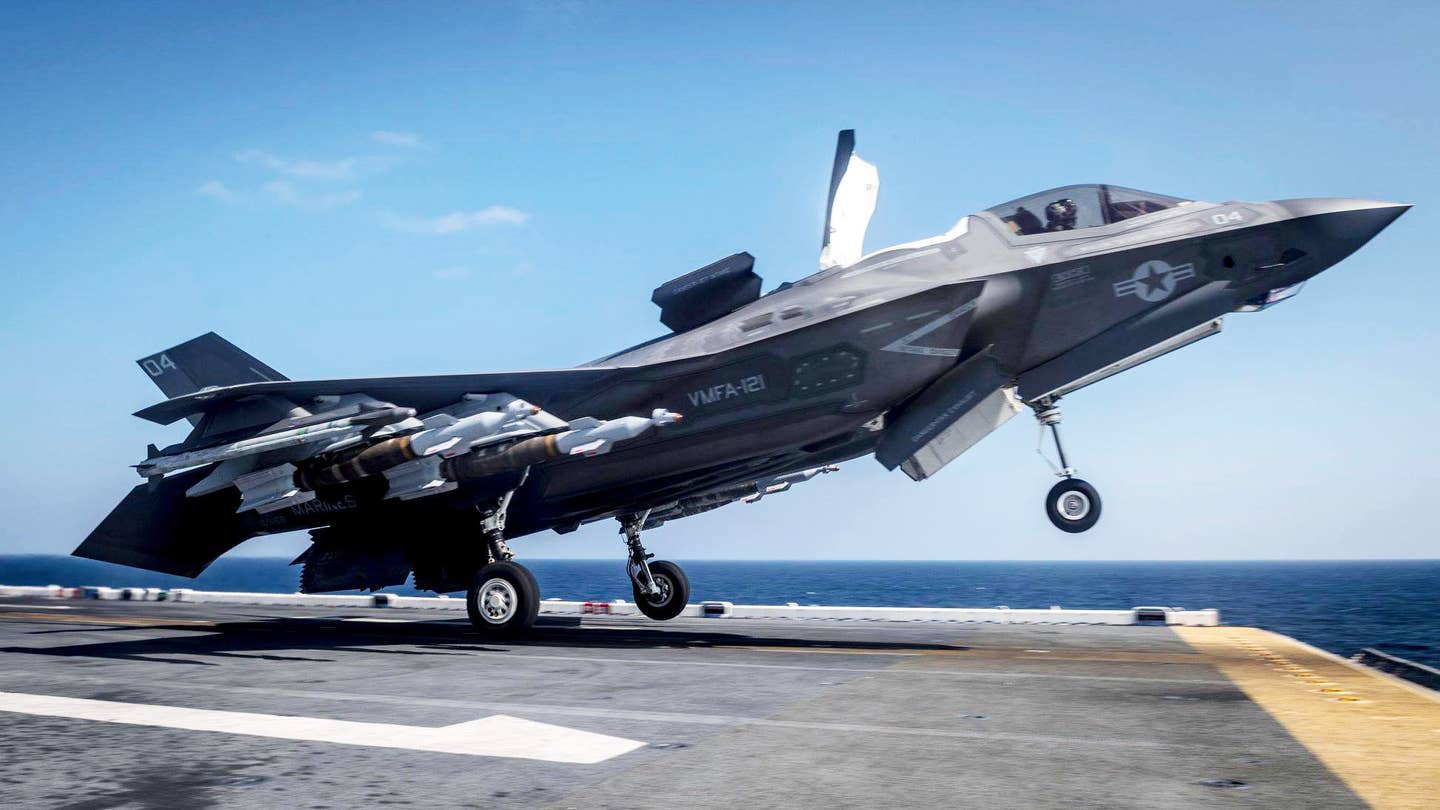
USN





